Understanding the Metaverse: The Next Frontier in Educational Technology
In simple terms, the Metaverse represents a collective virtual space where people can interact, learn, and play. This digital realm is created by the convergence of physically persistent virtual spaces, the sum of all virtual worlds, and the Internet. Imagine it as a universe of endless, interconnected virtual communities where users, represented by avatars, can attend classes, hold meetings, or socialize without physical world constraints.
Defining the Components of the Metaverse
The Metaverse consists of several key components that facilitate an immersive educational experience. Firstly, virtual reality (VR) allows users to step into a fully immersive environment. Secondly, augmented reality (AR) overlays digital information onto the real world. In addition, the Metaverse leverages 3D reconstruction and artificial intelligence (AI) to build realistic and interactive settings, thus enabling a more productive learning environment.
Revolutionizing Education Through Metaverse Strategies
The Metaverse holds potential to revolutionize education by enabling immersive learning experiences that are not possible in a traditional classroom. Strategies like virtual field trips, gamified learning, and collaborative projects come to life in the Metaverse, offering a diverse range of interactive and engaging educational opportunities.
Immersive Learning with Virtual Field Trips
Within the Metaverse, students can embark on virtual field trips to historic sites, distant planets, or even microscopic environments. Such experiences deepen understanding and retention of subject matter. For instance, a virtual trip to ancient Egypt, complete with a realistic 3D tour of the pyramids, can enhance a history lesson in ways that textbook images cannot.
Engagement through Gamified Learning
Additionally, employing gamified learning techniques within the Metaverse incentivizes students to engage with lessons in a playful and competitive manner. This method blends education with game elements to make learning more fun and motivating. Students could solve puzzles related to mathematics or language, turning abstract concepts into tangible challenges.
Collaboration in Virtual Spaces
Beyond individual learning, the Metaverse fosters collaboration. In a shared virtual space, students from around the world can work together on projects in real-time, breaking down the barriers of physical distance and creating a global classroom atmosphere. Such peer-to-peer interaction encourages the development of communication and teamwork skills.
Technical Advancements Supporting Educational Experiences
The ongoing improvements in technology that underpin the Metaverse are critical to its educational viability. Faster internet speeds, better VR and AR interfaces, and more sophisticated AI algorithms are continually enhancing the way users can interact within these virtual spaces. This supports a seamless and interactive educational experience that can be tailored to individual learning styles, bridging the gap between digital and physical learning environments.
Bringing Learning to Life with Enhanced AI
Specifically, AI plays a significant role by personalizing learning experiences in the Metaverse. It adapts to student performance, providing bespoke resources or adjusting difficulty levels in real-time. Such personalized attention replicates the benefits of one-on-one tutoring within a digital landscape.
The Role of High-Speed Internet and Improved Hardware
None of this would be possible without the backbone of high-speed internet and continuous improvements in VR and AR headsets. New generations of these devices are increasingly lightweight, powerful, and affordable, bringing the Metaverse within reach for a growing number of educational institutions.
As educators and technologists alike explore the possibilities within the Metaverse, it is clear that this burgeoning field stands at the forefront of educational innovation. As we work to understand and integrate these technologies into our learning systems, the prospect of a global, immersive, and personalized educational experience becomes not just a possibility, but an unfolding reality.
The Revolutionary Advantages of the Metaverse for Enhancing Learning Outcomes
Imagine stepping into a virtual classroom where the boundaries of physics and geography no longer limit the learning experience. The Metaverse, a collective virtual shared space, is transforming the landscape of education. It offers students and educators alike an immersive environment for instruction, collaboration, and exploration. Let’s dive into the core advantages the Metaverse brings to education and how it enhances learning outcomes.
Interactive and Immersive Learning Environments
The Metaverse provides incredibly interactive settings, transporting learners to a realm where the only limit is their imagination. Textbooks and static presentations are replaced with dynamic, three-dimensional experiences. For instance, students can witness historical events unfold before their eyes or delve into the intricacies of human anatomy with a level of detail traditional classrooms can’t match. This interactivity leads to far greater engagement and retention of information, as learners become active participants in their education.
Accessibility and Inclusivity in Education
One of the most profound advantages of the Metaverse is its ability to bridge gaps in educational accessibility. No matter where individuals are located, they can step into a virtual space where everyone has a front-row seat. Additionally, the Metaverse offers customizable avatars and environments, making education more inclusive for individuals with disabilities or learning challenges. This inclusive approach not only broadens the reach of quality education but also ensures that diverse learning needs are met, contributing to improved overall learning outcomes.
Collaboration Beyond Borders
Collaboration is a key component of learning, and the Metaverse knocks down geographical barriers, connecting learners from around the globe. Students can work on group projects, partake in international debates, or join forces in scientific research, all within the virtual space. This global exchange of ideas fosters cultural understanding and prepares students for the interconnected world awaiting them. Networks formed in the Metaverse can result in a vibrant learning community, with each member contributing unique insights and expertise.
The Metaverse is more than just a high-tech trend; it’s a revolutionary shift in the way we approach education. It offers interactive and immersive experiences, unparalleled accessibility, and opportunities for collaboration that were previously unthinkable. Education in the Metaverse not only captivates students’ attention but also prepares them for a future where virtual and physical realities coalesce. As we stand at the cusp of this transformative era, it’s clear that the Metaverse holds tremendous potential for enhancing learning outcomes and equipping learners with the tools they need to thrive in an ever-evolving world.
Integrating Metaverse Technologies into Modern Classrooms for Interactive Learning
Enhancing Education: The Metaverse in Modern Classrooms
Embracing the Metaverse for Interactive Classroom Dynamics
The concept of Metaverse technologies is taking the world by storm, and its application in education is ushering in a new era of learning. Imagining our classrooms without screens seems almost archaic as we venture into educational realms that blend reality with the virtual. The Metaverse provides students and teachers with a 3D environment where interactive learning can take place in unprecedented ways.
With the advent of VR headsets and immersive interactive tools, traditional learning is being complemented and often transformed. Students can now dive into historical reconstructions, manipulate complex molecules in a chemistry class, or engage with mathematical concepts in spatially conceptual ways. The integration of these technologies is not only about visual experience; it’s about fostering a multi-sensory approach to education that caters to various learning styles and abilities.
Practical Applications of Metaverse in Curriculum
Virtual Field Trips
One of the most exciting applications of the Metaverse in education is the ability to conduct virtual field trips. Imagine a geography class where students can instantly transport to the Himalayas or the Great Barrier Reef. No permission slips, no travel costs, just instant, on-demand experiential learning. This not only makes education more accessible but can also help instill a sense of wonder and exploration in students.
Enhanced Collaboration and Social Interaction
Collaboration is a cornerstone of modern education, and Metaverse technologies facilitate this through shared virtual spaces. Students can work together on projects in a digital world, regardless of their physical location, breaking down barriers of distance and enabling global education initiatives. This encourages cultural exchange and fosters a global perspective among students.
Individualized Learning Experiences
Individual learning styles vary significantly, making it challenging for educators to address everyone’s needs in a traditional classroom setting. The Metaverse allows for varied and adaptive learning scenarios. A student who struggles with textbook-based learning might excel in a virtual lab where they can see and manipulate the subject matter. Content can be tailored, and real-time feedback can be integrated, providing a personalized educational experience for each student.
Challenges and Considerations in Metaverse Integration
Integrating Metaverse technologies into the classroom does come with challenges. There are considerations regarding equity of access, as not all students may have the same opportunities to engage with high-end devices. Furthermore, the development of content that harnesses the power of the Metaverse for educational purposes will require collaboration between educators, technologists, and policymakers.
Moreover, moderation and safety within these virtual spaces need to be treated with paramount importance. Preparing educators to navigate these new teaching environments is also crucial, as they must be well-versed in the technology to guide and support their students effectively.
Navigating the Challenges: Privacy and Security in the Educational Metaverse
As educational institutions dive into the immersive world of the Metaverse, new privacy and security issues come to light. The potential of this blended virtual environment to transform the learning experience is vast, but so are the challenges that need careful attention. Addressing these concerns resiliently can ensure a safe and secure adoption of Metaverse technologies in education.
Understanding the Privacy Implications
Educators and technologists must jointly comprehend the privacy implications of the Metaverse. Privacy in the Metaverse isn’t just about keeping information confidential; it’s a multi-faceted issue. Participants in the educational Metaverse often share personal data, potentially including sensitive information, which could be exploited if not adequately protected. Here, we explore actionable strategies to maintain user privacy while fostering an open learning experience.
First and foremost, there needs to be a clear set of privacy protocols. This should include data minimization practices, which ensure that only the necessary data is collected. Transparent data handling and user consent are also paramount to privacy. Leveraging emerging technology, like encryption and zero-knowledge proofs, can further enhance data security while preserving privacy.
Moreover, creating awareness among users – students, teachers, and administrators – is critical. Engaging with them about the importance of personal data and how to protect it in the Metaverse is necessary for fostering an informed community. Simplified user agreements and privacy policies should be in place, enabling easy understanding and control over personal data.
Securing the Educational Metaverse
Security in the educational Metaverse transcends traditional cybersecurity measures. Given the intricate interconnections between various virtual spaces and real-world systems, security frameworks must be comprehensive and robust.
A starting point could involve adapting current cybersecurity best practices to the Metaverse scenario. This may include regular security assessments, strong authentication methods, and rigorous incident response plans. But in the Metaverse, there is also a need to address avatar-related security, ensuring that avatars can’t be hijacked or replicated without consent. Use of biometric recognition and advanced AI algorithms may offer solutions here, but with new technology come new responsibilities.
Educational institutions should collaborate to form a collective security standard specifically for the Metaverse, taking into account the unique challenges posed by this environment. Sharing resources and knowledge can significantly improve the collective security posture. Furthermore, in the event of security breaches, there must be clear procedures for containment and mitigation, as well as transparent communication with the affected parties.
Building Trust in the Educational Metaverse
Trust is the cornerstone of any educational endeavor, and in the Metaverse, it is no different. Building trust goes hand in hand with assuring users that their privacy and security are of utmost importance. Efforts to enhance trust include conducting regular privacy and security training for all users, enforcing strict access controls, and implementing a clear and enforceable code of conduct that promotes respectful behavior within the virtual space.
By focusing on privacy, security, and trust, educators can unlock the full potential of the Metaverse as a transformative educational tool. This will not only protect users but also foster an environment conducive to learning, exploration, and innovation. With these principles at the forefront, the educational Metaverse can thrive as a safe and secure space for all.
What the Future Holds: Predicting the Evolution of Metaverse-Based Education
Immersive Learning Environments in the Metaverse
The concept of immersive learning through virtual environments is revolutionizing education. As technology advances, so does the potential for creating realistic, engaging, and interactive spaces within the metaverse. Imagine classrooms where physical boundaries are eliminated, allowing students to explore the Colosseum of ancient Rome or conduct experiments in a simulated lab. The level of engagement in such environments can lead to deeper understanding and retention of knowledge.
Customization and Flexibility
Metaverse-based education offers unparalleled customization, catering to each student’s individual learning style. With adaptable avatars and tailor-made lessons, students will be able to learn at their own pace and in a manner that best suits their preferences, enhancing the overall educational experience.
Collaboration and Interactivity
One of the key features of metaverse-based learning is the potential for collaboration across geographical lines. Students from various parts of the world can come together in a shared virtual space to interact, discuss, and work on projects instantly, something that was once confined to the walls of a classroom.
Personalized Education and AI Integration
Tailoring education to individual needs is at the forefront of the evolution within metaverse-based platforms. Artificial intelligence (AI) will not only assess student performance but also adapt curriculum in real-time, providing immediate feedback and personalized learning paths. This can be a game-changer, particularly for those with learning differences or those who excel beyond their grade level.
Enhanced Student Support
AI-driven virtual tutors will offer additional support for students, available 24/7. These tutors will assist with homework, clarify doubts, and help students prepare for tests. The continuous support will ensure that students can learn and revise at their convenience without feeling the pressure of limited office hours.
Global Classrooms and Cultural Exchange
Another exciting prospect of metaverse-based education is the creation of a truly global classroom. The barriers of distance and culture are minimized as students connect and collaborate with peers from different backgrounds. This exposure fosters greater cultural understanding and prepares students to become citizens of a globally connected world.
Promoting Language Learning and Exchange
Within a connected metaverse, language learning can thrive through natural and regular interaction with native speakers. Students will be able to practice languages in situational contexts, making acquisition more intuitive and authentic.
Challenges and Ethical Considerations
Transitioning to metaverse-based education is not without challenges. Concerns regarding data privacy, equal access to technology, and students’ well-being within virtual environments are critical issues that must be addressed. There is a need for robust ethical standards and regulations to ensure a safe, inclusive, and fair educational metaverse.
Overcoming Technological Disparities
To truly benefit from the metaverse in education, addressing the digital divide is essential. Ensuring that all students, regardless of socio-economic status, have access to the necessary technology is a step towards equity in education and essential for the success of the metaverse as an educational tool.

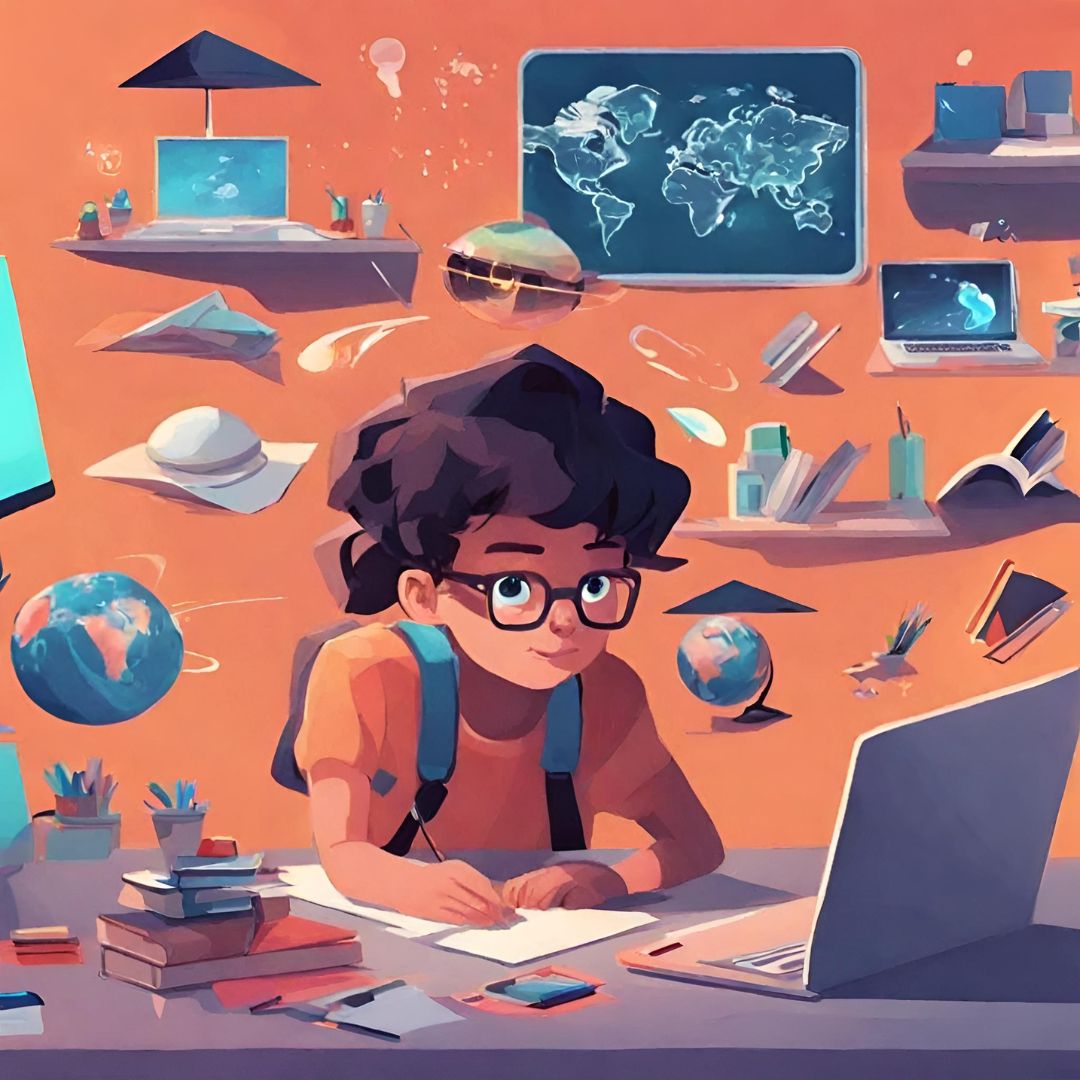
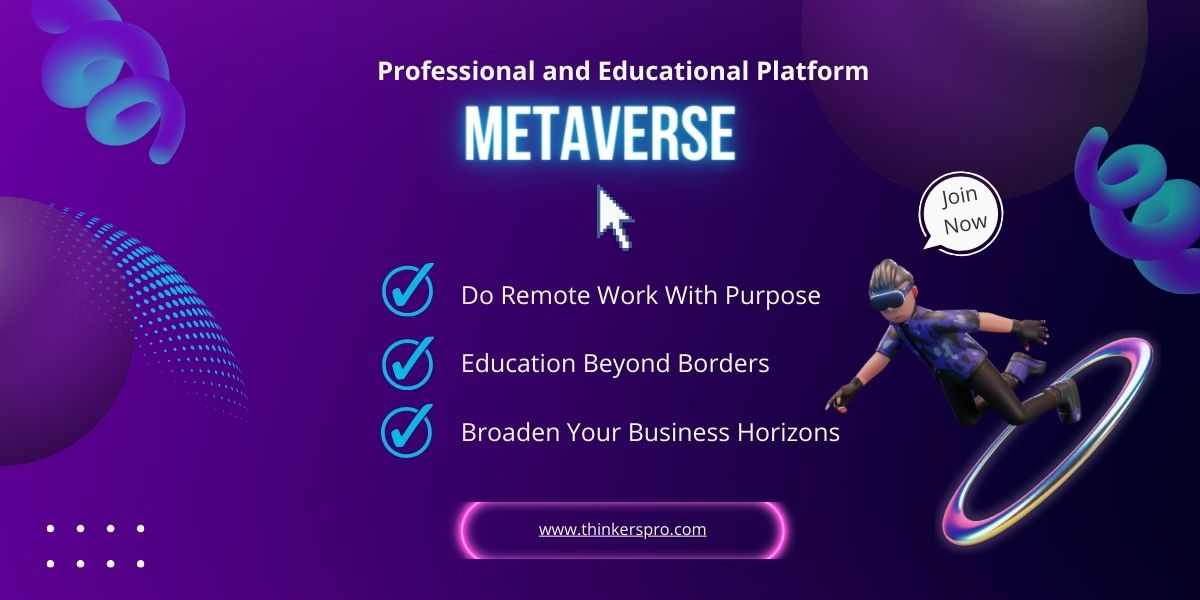

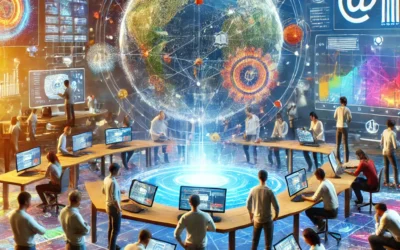
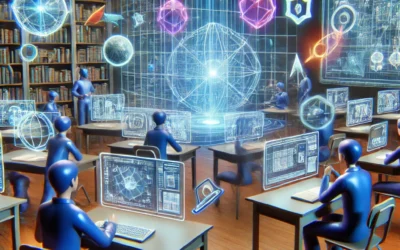
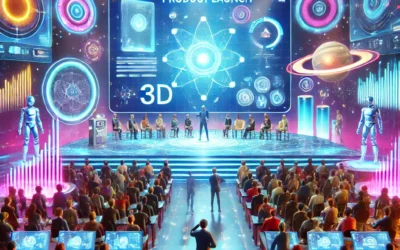
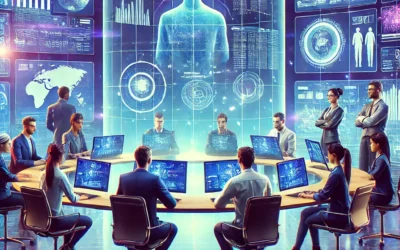
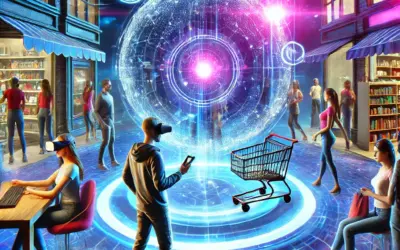

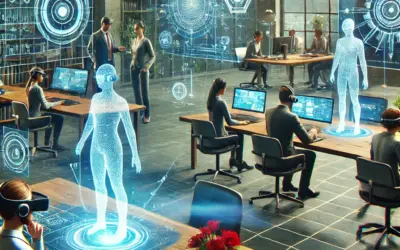
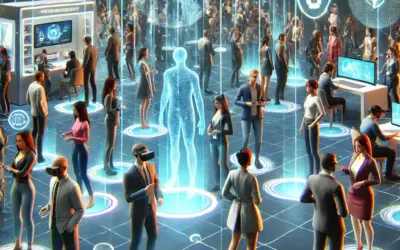
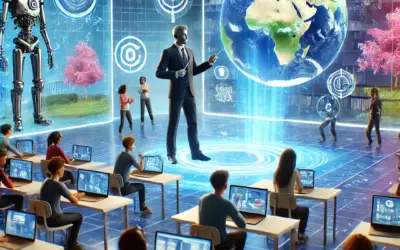
0 comentarios